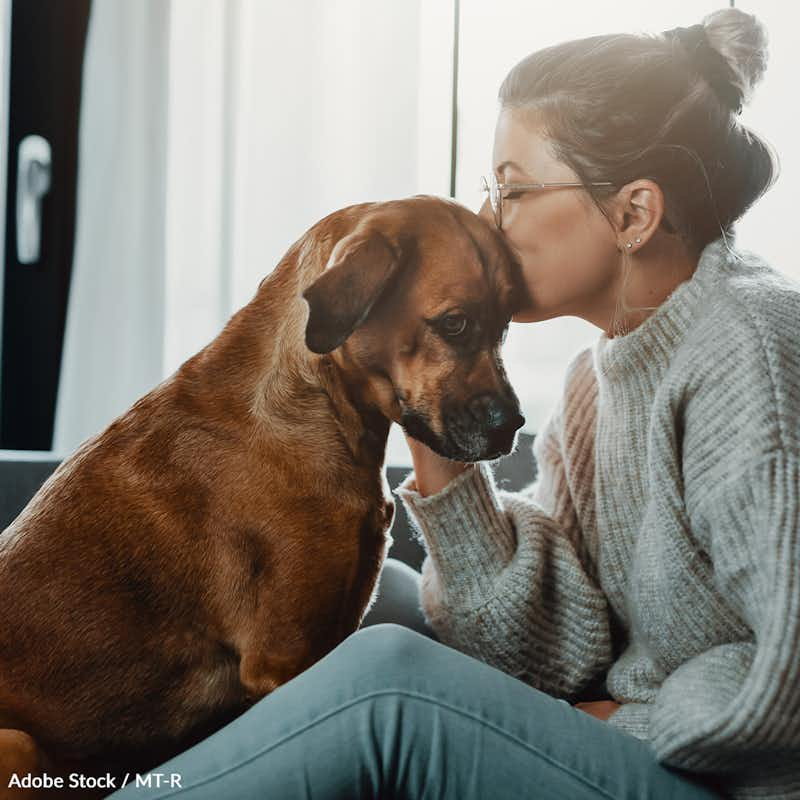Pledge to Protect Pets from Dog Flu
4,850 signatures toward our 30,000 Goal
Sponsor: The Animal Rescue Site
There has been a surge in cases reported in multiple states, resulting in some dogs becoming seriously ill or even dying. Take action for dogs!

Protect Your Pet from Dog Flu: Take the Pledge to Reduce the Spread of Canine Influenza
Dog flu, or Canine Influenza Virus (CIV)1, is a highly contagious respiratory disease that can affect dogs of all breeds and ages. First introduced to the United States in 2004, the two strains of CIV, H3N8 and H3N2, are particularly potent and can cause severe health complications in dogs, particularly those with weakened immune systems, senior dogs, and puppies2.
As a dog owner, it’s important to take precautions to protect your pet and reduce the spread of the disease. Recent outbreaks in many states3 have highlighted the health risks of dog flu, and it’s crucial for dog owners to be informed and take action.
The symptoms of dog flu include cough, runny nose, fever, lethargy, eye discharge, and reduced appetite4. In severe cases, dogs may develop life-threatening pneumonia. While treatment consists of supportive care and antibiotics for secondary bacterial infections, prevention is key.
According to the American Veterinary Medical Association5, the mortality rate of CIV is low, and most dogs recover with supportive care. However, dogs with severe symptoms or secondary bacterial infections may require hospitalization and intensive treatment, which can be costly and emotionally draining for pet owners.
CIV is highly transmissible through aerosols and nose-to-nose contact6. Outbreaks tend to occur sporadically and seasonally, especially in places like shelters, boarding facilities, and grooming parlors. Dogs have no natural immunity to dog flu because it’s a newer virus, which is easily spread by dogs who move around a lot, like rescue dogs or ones that travel and move with their owners7.
This winter, there has been a surge in cases, with outbreaks reported in multiple states, including California, Arizona, and Texas, resulting in some dogs becoming seriously ill or even dying8. Outbreaks of dog flu tend to occur seasonally during the winter months9. Dog owners should be especially cautious in areas with high dog populations and areas where there have been recent outbreaks of CIV. If traveling with your pet, be aware of CIV activity in the area and take appropriate precautions.
Vaccines are available for both strains of CIV and are recommended by veterinarians for dogs at risk10. Dogs should receive two initial vaccinations, followed by yearly booster shots. Vaccination can reduce the severity of symptoms and the risk of infection, but it does not guarantee complete protection.
As a responsible dog owner, it's important to take all necessary precautions to protect your furry friend from the highly contagious and potentially deadly CIV. Take action for the health of your dog and others by adding your name to the pledge to protect pets from dog flu!
- Krista Williams, BSc, DVM, CCRP; Amy Panning, DVM; Ernest Ward, DVM Amy Panning, DVM, VCA Animal Hospitals (2023), "Canine Influenza: The Dog Flu."
- Emily Anthes, The New York Times (2 December 2022), "Dog Flu Is Back, Too."
- Snodgrass Veterinary Medical Center, "Are Your Dog’s Respiratory Symptoms Caused By Canine Influenza?"
- American Veterinary Medical Association, "Canine Influenza Pet Owner's Guide."
- Centers for Disease Control and Prevention, U.S. Department of Health & Human Services, "Key Facts About Canine Influenza (Dog Flu)."
- Andrea Perkins, Auburn University (26 August 2022), "Expert Answers: Auburn College of Veterinary Medicine’s Perkins gives guidance on canine flu."
- DogFlu.com, "Dog Flu Outbreak Map."
- Gina MArtinez, CBS News (16 February 2023), "Dog flu cases on the rise in some U.S. regions this winter season."
- Noor Adatia, The Dallas Morning News (8 December 2022), "Dog flu is highly contagious and can spread during the holidays. Here’s what it looks like."
- The Kennel Club (2023), "Tackling health and welfare issues in brachycephalic dogs."
The Pledge:
As a responsible pet owner, I pledge to take the necessary precautions to protect my pet from the highly contagious and potentially life-threatening dog flu virus. I understand that the virus spreads quickly and can be transmitted through aerosols and nose-to-nose contact.
Dog flu was first introduced to the United States in 2004 and has since spread throughout the country. Outbreaks are sporadic and seasonal, with winter being the peak season. The virus is highly transmissible and tends to affect dogs in shelters, boarding facilities, and grooming parlors. This winter, there has been an uptick in cases, with outbreaks reported in many states.
To protect my pet and prevent the spread of dog flu, I pledge to take the following actions:
- Get my dog vaccinated against dog flu, especially if they are senior or have a compromised immune system.
- Keep my dog away from other dogs that appear sick or exhibit flu-like symptoms.
- Avoid taking my dog to areas with a high risk of dog flu outbreaks, such as boarding facilities, grooming parlors, and dog parks.
- Wash my hands thoroughly before and after handling my dog or interacting with other dogs.
- Disinfect any surfaces that my dog comes in contact with, including their toys and bedding.
- Cover my mouth and nose with a tissue or elbow when coughing or sneezing.
- Wear a mask if I am feeling unwell or have flu-like symptoms when interacting with my dog or other dogs.
- Avoid traveling with my dog if there is a risk of dog flu in the area.
- Keep my dog healthy by providing them with a balanced diet and regular exercise.
- Seek immediate veterinary care if my dog exhibits any flu-like symptoms.
By taking these actions, I am doing my part to protect my pet and prevent the spread of dog flu. I understand that this virus is highly contagious and can be potentially fatal, and I am committed to taking the necessary precautions to ensure a safer and healthier future for my pet and all pets and humans.
 Welcome Back! Log In to Continue
Welcome Back! Log In to Continue